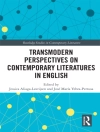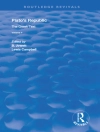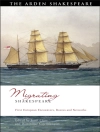Even as Romantic-period authors asserted the importance of telling the unvarnished truth, novelists were deploying narrative glossing in particularly sophisticated forms. The author examines the artistic craft and political engagement of three major women novelists-Elizabeth Hamilton, Maria Edgeworth, and Sydney Owenson-whose self-conscious use of glosses facilitated their critiques of politics and society. All three writers employed devices such as prefaces and editorial notes, as well as alternative media, especially painting and drama, to comment on the narrative. The effect of these disparate media, the author argues, is to call the reader’s attention away from the narrative itself. That is, such glossing or ‘varnishing’ creates narrative ruptures that offer the reader a glimpse of the process of fictional structuring and often reveal the novel’s indebtedness to a particular historical moment. In spite, or perhaps because, of their being gendered feminine in eighteenth-century rhetorical commentary, therefore, these glosses allow women writers to participate in ‘masculine’ discussions outside the conventional domestic sphere. Informed by a wide range of archival texts and examples from the visual arts, and highlighting the 1798 Irish Rebellion as a major event in Irish and British Romantic writing, the author’s study offers a new interdisciplinary reading of gendered and political responses to key events in the history of Romanticism.
Susan B. Egenolf
Art of Political Fiction in Hamilton, Edgeworth, and Owenson [EPUB ebook]
Art of Political Fiction in Hamilton, Edgeworth, and Owenson [EPUB ebook]
Buy this ebook and get 1 more FREE!
Language English ● Format EPUB ● Pages 220 ● ISBN 9781351147705 ● Publisher Taylor and Francis ● Published 2017 ● Downloadable 3 times ● Currency EUR ● ID 5544339 ● Copy protection Adobe DRM
Requires a DRM capable ebook reader












